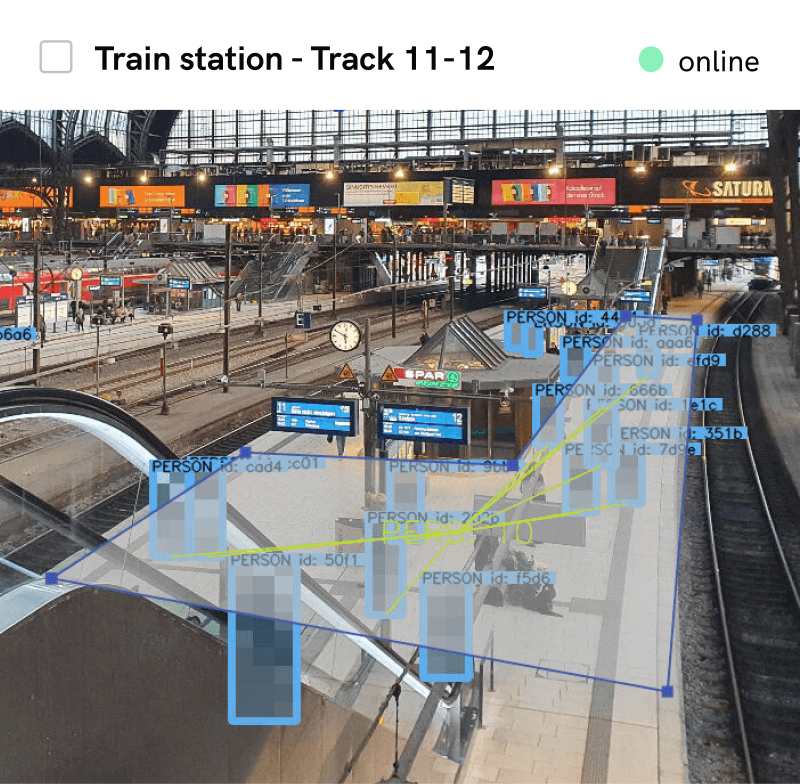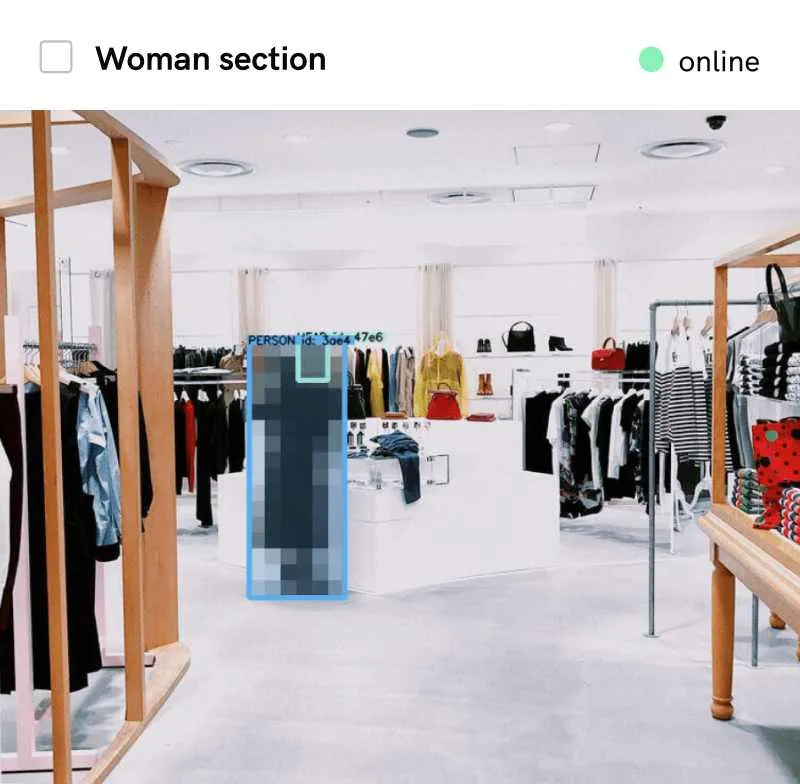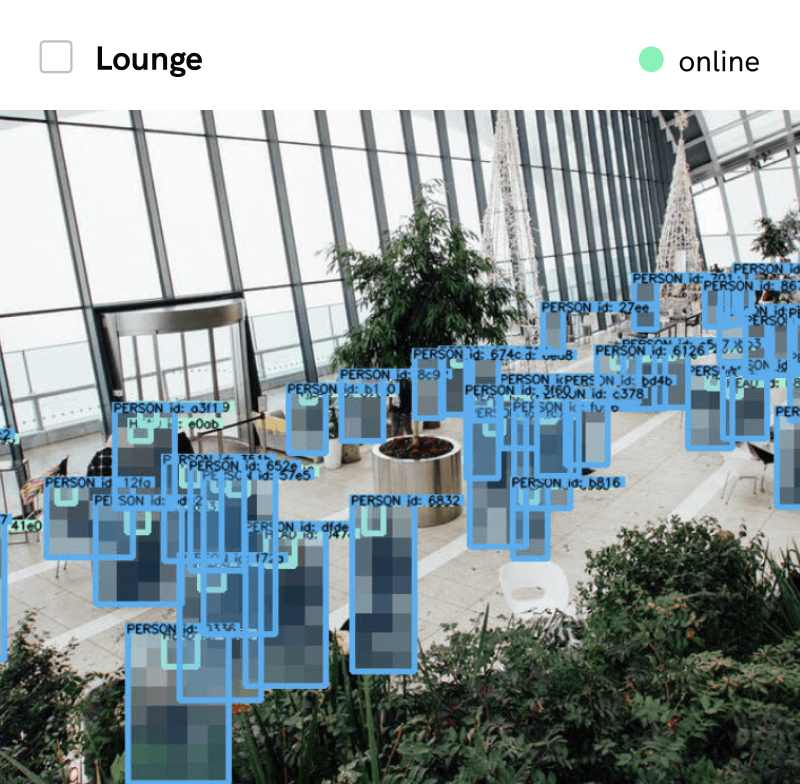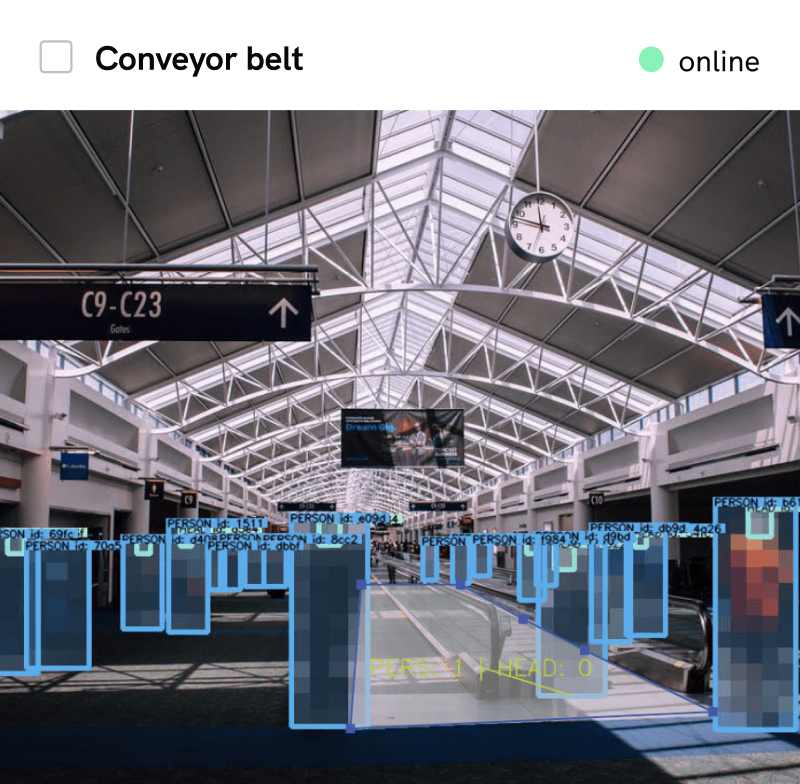How Video Analytics Manages Crisis at Airports?
Crisis management is a critical aspect of airport operations that involves preparing for, responding to, and recovering from emergencies. Given the high traffic and the complex environment of airports, the ability to manage crisis effectively is essential to minimize disruption and ensure passenger safety. In this article, we will deep dive into how video analytics software affects crisis management in airports.
Published
May 29, 2024

Introduction
Airports are one of the busiest and most important transportation hubs, handling thousands of passengers and tons of cargo daily. Due to this high volume of traffic, airports are vulnerable to various security threats. Therefore, strict security surveillance measures are crucial.
Crisis management is a critical aspect of airport operations that involves preparing for, responding to, and recovering from emergencies. These emergencies threaten the safety and security of passengers, staff, and infrastructure. Given the high traffic and the complex environment of airports, the ability to manage crisis effectively is essential to minimize disruption and ensure passenger safety. In this article, we will deep dive into how video analytics software affects crisis management in airports.
What is Crisis Management?
Crisis management involves coordinated security and safety efforts by an organization to address threats that could harm the organization or the public. Airports face various emergencies that can significantly impact security and operations. This involves a range of potential incidents such as natural disasters, terrorist attacks, prolonged delays, technological failures, health emergencies, and other unpredictable events that require immediate and effective responses.
Recent incidents in Germany illustrate these threats: a father attempting to abduct his daughter via the airport, a security breach where an individual tailgated a car to hug the chancellor, and climate activists illegally entering airport premises to protest. These examples can be further expanded. The important point is that these emergencies underscore the necessity for robust security measures, including advanced surveillance and quick response protocols.
Effective crisis management strategies at airports rely on advanced technologies, trained personnel, comprehensive planning, and collaboration with local and international emergency response teams. The integration of video analytics into this framework is increasingly valuable, providing real-time data that enhances the effectiveness and responsiveness of crisis management strategies.
How Video Analytics Helps Crisis Management in Airports?
Here's a summary of how video analytics can support both pre-crisis and post-crisis situations in the areas of planning, operations, and security.

Planning:
In the planning step of crisis management, video analytics enhance forecasting and resource allocation by analyzing historical data to predict potential crises in airports. This enables effective staff allocation. Additionally, video analytics assist in airport infrastructure planning by analyzing passenger flow patterns, leading to effective capacity planning and the development of crowd management strategies based on previous crisis behaviors.
Operations:
In the operations step of airport crisis management, video analytics enhance efficiency and responsiveness through real-time monitoring and incident detection. They provide real-time data on passenger movement and congestion, allowing for dynamic resource allocation and effective traffic flow management. Automated alerts enable immediate response to potential crises and facilitate coordination between operational teams, ensuring timely and well-coordinated actions during emergencies.
Security:
In the security step of airport crisis management, video analytics play a crucial role by identifying suspicious behaviors and potential threats through ai based behavioral and anomaly detection. They enable rapid and accurate incident response with detailed video feeds, supporting forensic analysis for post-incident investigations. Additionally, video analytics enhance access control through facial recognition and identity verification systems, and secure airport perimeters by detecting and alerting on breaches, thereby strengthening overall airport security during crises.
Key Features of Isarsoft Perception on Crisis Management
Video analytics technology plays a pivotal role in supporting crisis management at airports through several key applications:
Real-Time Object Detection
Real-time object detection is a pivotal feature in crisis management at airports. Video analytics enables the instant identification and tracking of objects. By detecting unattended or suspicious items in real-time, security personnel can immediately respond to potential threats, minimizing risks such as bomb threats or unauthorized items. During crises in airports, real-time object detection helps manage evacuations by achieving crowd management and ensuring clear pathways. Integrating this technology with other security systems enhances overall situational awareness, ensuring a safer and more efficient airport environment during emergencies.
Behavior Recognition
Behavior analysis through video analytics refers to the use of AI based algorithms that can identify dangerous behavior. These software are trained to recognize specific actions such as aggressive behavior or individuals loitering in sensitive areas—activities that could indicate a security threat. By detecting such behaviors, video analytics systems enable security teams to be alerted proactively, possibly before any actual threat happens.
Crowd Monitoring
Airports often face the challenge of managing large volumes of passengers, especially during peak times, holidays, or when flights are delayed. Video analytics helps manage these large crowds by analyzing passenger flow and density. Intelligent video surveillance can identify areas that are becoming overly congested, which could lead to dangerous situations. By alerting landside management to these situations, measures can be taken to redirect passenger flow, so that airports can work effectively and potential crises can be prevented.

Luggage Monitoring
By providing real-time monitoring and surveillance of luggage, video analytics support crisis management in airports. This intelligent software enables the immediate detection of suspicious activity or unattended baggage, creating prompt alarms for potential security threats. During a crisis, video analysis can track the movement of both luggage and individuals, aiding in incident management and resource allocation. It also assists in crowd management during evacuations, ensuring safe and efficient passenger flow. By easily integrating with current surveillance systems, video analysis creates a comprehensive safety that secures air travel and airport environment.
Alarm Creation
In an emergency, such as a fire or a medical issue, video analytics can be instrumental in alarming the emergency services. The technology can provide real-time alarm capability about the location and scale of the emergency, like the number of people affected, and the best access routes free of congestion. This information helps emergency teams to reach the affected areas more quickly and with the appropriate resources, significantly enhances overall crisis management.
Video analytics serves as a critical tool in the modern airport's security and crisis management strategy. By providing real-time surveillance, behavior analysis, crowd management, and alarm creation, video analytics not only enhances the safety and security of airports but also improves the overall efficiency of crisis management during both unexpected conditions.
Easy Integration With Current Systems
Isarsoft Perception is seamlessly integrated with various surveillance systems, including Video Management Systems (VMS) and Physical Security and Incident Monitoring (PSIM), to detect crises or incidents in advance. For further information, please check our integrations.
References:
More about Isarsoft
With Isarsoft Perception, your camera systems become part of your business intelligence. Whether the goal is to increase efficiency, customer satisfaction, or safety, Isarsoft Perception provides the insights needed for informed decisions.

Contact us, to learn more about how to turn security cameras into intelligent sensors.
Optimize your business processes.
Improve business processes with video-based business intelligence from Isarsoft.









